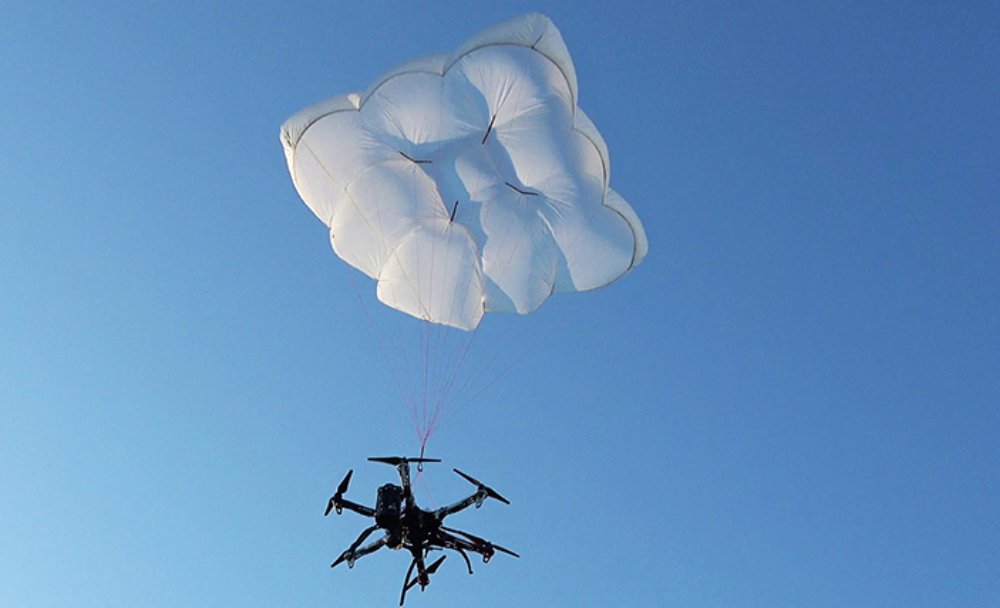The Austrian provider of parachute rescue systems for unmanned aircraft will present the systems DRS-5 and DRS-10 to the professional public for the first time at the Intergeo in Frankfurt am Main. After completion of the last flight tests for the DRS-5 in late Summer 2018, the first systems will be delivered to end customers in Winter 2018.
The parachute rescue system DRS-5 is designed for multicopters with a total weight of up to 8 kg. The system consists of a carbon cage in which the parachute is stored, as well as the associated electronics. These electronics, including the sensors, monitor the flight status of a drone, independent of the flight controller. A sophisticated algorithm merges this sensor data, through which an automatic crash detection can be realized. Therefore, in an emergency the pilot no longer needs to react and press an eject button. Often, this is technically no longer possible anyway, e.g. with a failure of the radio link. Furthermore, the algorithm reacts faster than the pilot, i.e. the system ejects the parachute itself. All flight data and movements are recorded in a Black Box. In an emergency these can be read out at the request of the customer and made available to insurance companies or authorities.
“Our goal is to ensure, that even in an emergency Beyond Visual Line of Sight (BVLOS) the drone can be safely intercepted. With our parachute system that is always possible, due to the electronics that are completely separate and independent of the flight controller. In addition, our system has the advantage, that it manages completely without explosive, pyrotechnical solutions. Consequently we have a system that is considerably lighter, and functions even in a worst case scenario”, elaborated Andreas Ploier, CEO and co-founder of Drone Rescue Systems GmbH.
The reliability of the system has been verified in extensive tests by Joanneum Aeronautics in Graz. In the framework of the tests 100 flights were conducted, during which the parachute system was ejected. Half of the flights were conducted with a DJI F550 weighing 1.6 kg. The rest of the tests were performed with the 3.8 kg Vulture, which was developed by the FH Joanneum. In both cases the DRS-5 was attached to the side of the main body of the drone. In each of the tests the parachute was ejected at a height of 30 m. Every test was documented. Furthermore, the data were saved both in the flight controller as well as in the DRS-5 sensor system. After every 10th test the parachute system was subjected to a visual examination and checked for possible damage or wear.
“After conclusion of the tests it can be recorded, that all 100 flights were successfully completed”, rejoiced Ploier. “In every test the multicopter landed safely. Thereby, the kinetic energy was significantly below the limit of 79 J. Therefore all requirements specified by the European Aviation Safety Agency (EASA) were observed”, elaborated Ploier.
Besides the DRS-5, the structurally identical parachute system DRS-10, which is designed for multicopters with a total weight between 5 and 20 kg, will also be presented at the Intergeo 2018. “Das DRS-10 system functions exactly the same as the DRS-5 and falls back on the same components. These are constructed identically, just oriented for a higher payload. The functioning method of both parachute systems is identical”, stated Ploier.
Drone Rescue will present the parachute systems DRS-5 and DRS-10 at the Intergeo, at Stand 12.0B.112, in Hall 12, from 16th to 18th October 2018.
Source: Press Release

